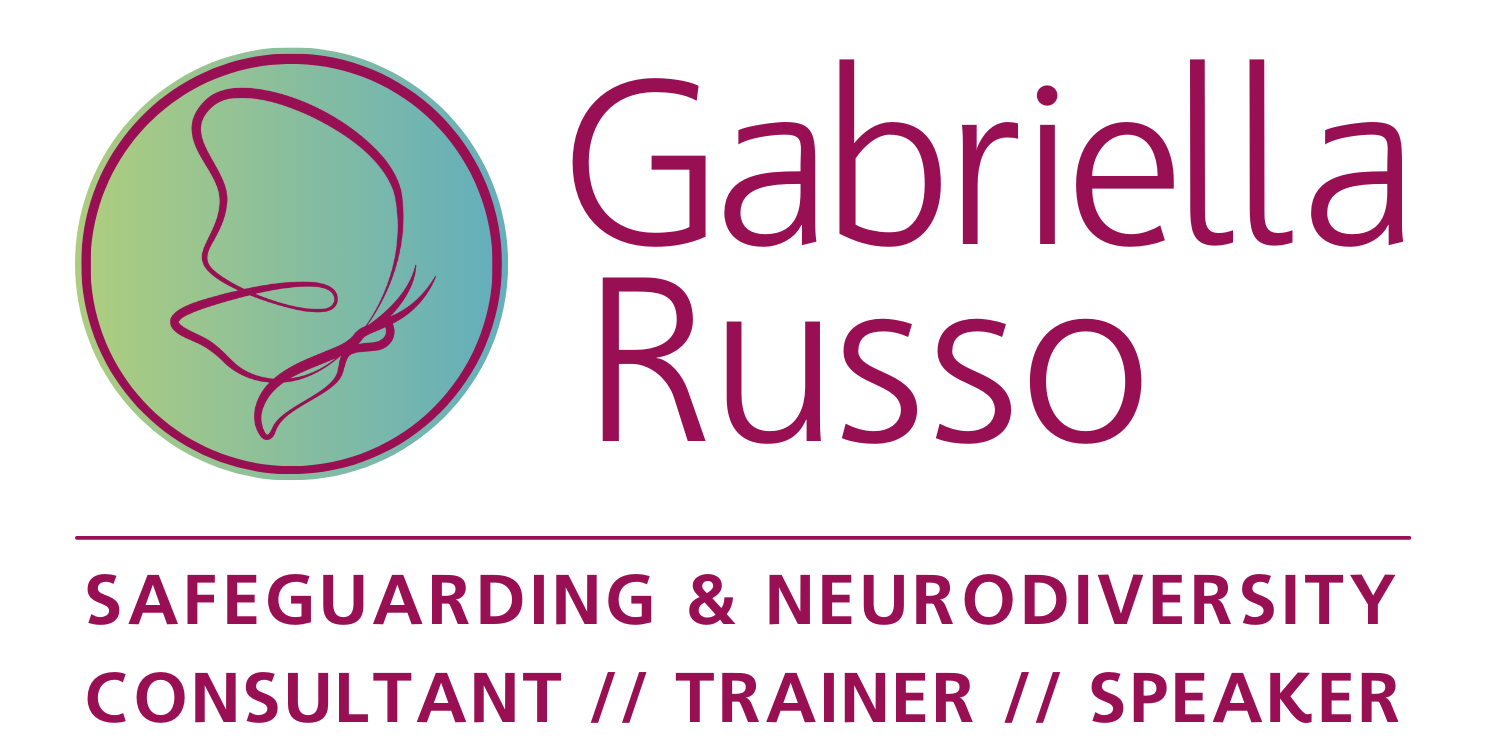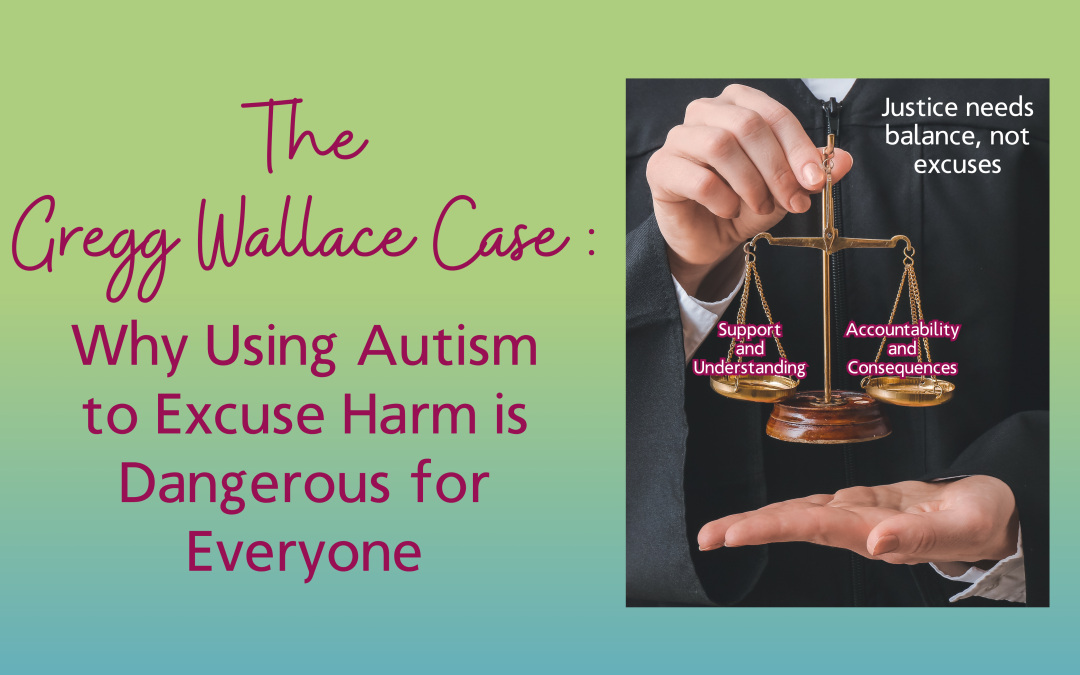My 30 years in safeguarding has made one thing impossible to ignore: when powerful people harm others, it’s always the most vulnerable who pay the price. And right now, we’re watching it happen again.
The Gregg Wallace case – 45 upheld allegations spanning nearly two decades and including sexualised comments, unwanted physical contact, and sustained bullying – should have been a clear-cut story of serious workplace harm and the institutional failures that enabled it. Instead, it’s become something far more dangerous: a masterclass in how autism can be weaponised to deflect accountability.
An independent investigation by Lewis Silkin for Banijay UK and the BBC upheld 45 out of 83 allegations spanning nearly two decades (2005-2024), substantiating inappropriate behaviour including unwanted physical contact, sexualised comments, bullying, and culturally insensitive remarks. These are not isolated slip-ups. They form a clear and sustained pattern of harm in a workplace context.
But here’s what’s keeping me awake at night: Wallace’s public suggestion that his autism diagnosis explains his behaviour, combined with his criticism that the BBC failed to protect him from a “dangerous environment”. As an autistic safeguarding professional who has spent decades working with vulnerable adults, neurodivergent individuals, and survivors of abuse, I need to address the deeper issues at play here.
This case isn’t just about Gregg Wallace. It’s about the structural failures that keep letting people down – and the dangerous precedent being set when neurodivergence becomes a shield for harm.
A Familiar Pattern: The BBC and Celebrity Safeguarding
The BBC is no stranger to high-profile safeguarding failures. The public has barely begun to process the serious questions raised around Huw Edwards, when another scandal makes headlines. And we haven’t forgotten the devastation left in the wake of Jimmy Savile, Rolf Harris, Stuart Hall, or DJ Mark Page – men whose celebrity status shielded them from scrutiny while serious harm was taking place.
In many of these cases, safeguarding warnings came too late – or were dismissed altogether. The excuses ranged from “we had no idea” to “it was a different time”. But at some point, repeated failure stops being accidental and starts becoming systemic. The Wallace case echoes this troubling history, where allegations were raised repeatedly – and too often ignored, with the investigation finding that policies lagged behind emerging patterns, especially before 2016.
If safeguarding isn’t embedded in an organisation’s culture, it will always come second to brand protection, contracts, or public image.
Power and Proximity: Understanding the Risk
At the heart of every safeguarding concern lies a simple equation:
Power + Proximity = Risk.
When someone has power – whether through fame, money, charisma, or seniority – the people around them are less likely to challenge inappropriate behaviour. And when that powerful person is regularly in close working proximity to others, especially junior staff, freelancers, or those in precarious roles, the risks increase significantly.
The dynamics at play here are ones I’ve seen countless times in my work and in my life:
- Freelancers and junior staff on MasterChef felt unable to speak out due to power imbalances
- Allegations raised repeatedly at the BBC – and too often ignored, with policies lagging behind emerging patterns
- High-powered personalities continuing unhindered, shielded by reputation and charisma
People often ask, “Why didn’t anyone speak up sooner?” The answer lies in the silent dynamics of fear, career risk, isolation, and gaslighting. Safeguarding is not just about having a policy on paper – it’s about creating a culture where people feel safe enough to use it.
Organisations must be brave enough to question not just “what happened” but “why it was allowed to happen”.
When Autism is Blamed for Harm
Here’s where this case becomes especially insidious. Wallace’s public suggestion that his autism diagnosis may explain some of his past behaviour – claiming the BBC “failed to investigate my disability” or protect him from a “dangerous environment” – isn’t just wrong. It’s a betrayal of every autistic person who has ever been harmed, marginalised, or misunderstood.
As an autistic safeguarding professional, let me state this unequivocally:
Autism does not cause abuse.
Autism does not excuse harm.
Autism is not a loophole.
The National Autistic Society cautioned that “every autistic person is different…it is important not to generalise or make judgments based on the actions…of any one individual.”
Seema Flower, founder of Blind Ambition, called Wallace’s defence “very, very poor…it has great, negative ramifications…making a mockery of the whole diagnosis”.
Autistic people may communicate differently. We may struggle with reading social cues, managing sensory overwhelm, or navigating fast-paced social environments. But these challenges do not account for sustained bullying, sexualised remarks, unwanted touching, or the misuse of status.
To suggest that abusive or inappropriate behaviour can be “explained” by autism is not just inaccurate – it is dangerous. It feeds public misconceptions, contributes to stigma, and risks further marginalising autistic individuals who already face discrimination, misunderstanding, and barriers to employment. Charities highlighted that using autism as a shield risks reinforcing harmful stereotypes, undermining fair treatment of neurodivergent individuals, and deterring employers from hiring them.
We need to talk about autism and safeguarding, yes – but with honesty and care, not as a get-out-of-jail-free card.
Neurodivergent People Are More Likely to Be Harmed, Not Cause Harm
What is rarely spoken about in these high-profile conversations is the actual safeguarding data around neurodivergence. Autistic people – particularly women and non-binary individuals – are disproportionately more likely to experience abuse, bullying, exploitation, and systemic exclusion.
Research consistently shows that neurodivergent individuals are:
- More likely to be isolated at work or school
- More likely to experience domestic or sexual abuse
- Less likely to have their disclosures believed
- Less likely to receive appropriate safeguarding responses
Autistic individuals are historically disproportionately affected by abuse, bullying, and exclusion, and frequently misunderstood or stereotyped as emotionless or socially naive – mistakes that can mask signs of genuine abuse. They remain vulnerable to policies that conflate neurodiversity with risk, like Ofsted’s disgraceful Prevent guidelines that dangerously linked autism to extremist tendencies.
So when public figures use their diagnosis to explain away harmful behaviour, it doesn’t just misrepresent autism – it diverts attention away from those most at risk.
Accountability and Reasonable Adjustment Can Co-Exist
There’s a growing movement calling for more neuro-inclusive workplaces – and rightly so. Employers do need to understand the needs of autistic staff, including adjustments around communication, processing time, sensory environment, and flexibility. As legal frameworks like the Autism Act 2009 oblige employers to provide reasonable support, these measures must complement, not replace, accountability.
But this must never be confused with tolerating harmful behaviour.
Support does not mean shielding someone from consequences.
Compassion does not mean abandoning professional standards.
A neuro-inclusive safeguarding culture means:
- Training staff to understand both risk and support needs
- Making space for difference while still holding boundaries
- Providing adjustments and clear expectations of respectful conduct
As autistic advocate, journalist and Director at NeuroUniverse, Jessie Hewitson emphasised when discussing the Wallace case: “It [being autistic] doesn’t mean you shouldn’t take responsibility for it [harmful behaviour]”.
It is perfectly possible to uphold safeguarding principles and offer neuro-affirming support at the same time. One should never be used to cancel out the other.
Organisational Learning: What Needs to Change
This case – and others like it – highlight urgent safeguarding gaps in high-profile industries. Media, entertainment, sport, and politics all rely on charismatic, often powerful individuals working in high-pressure environments. But without rigorous safeguarding cultures, they become breeding grounds for misconduct.
Organisations like the BBC need to:
- Embed trauma-informed, proactive safeguarding practices—not just after the fact, but at every level of operation.
- Create independent, confidential reporting mechanisms for staff and freelancers alike. Current systems have proven inadequate when power imbalances prevent people from speaking out.
- Include neurodiversity understanding and competency in all safeguarding and HR training, so behaviours are understood in context – not pathologised or ignored.
- Ensure that public messaging about autism reflects evidence-based understanding, not celebrity spin.
- Partner with specialist charities like Respond UK, which offers support through their trauma-informed services to autistic people who’ve experienced abuse, and the National Autistic Society, which provides research-based guidance. Seek out consultants who combine lived experience with professional expertise in both safeguarding and neurodiversity.
We cannot afford to keep treating safeguarding as a PR problem to be managed. It is a systemic problem to be solved – through culture, courage, and accountability.
A Call to the Public: Think Beyond Headlines
Stop treating celebrity scandals like entertainment when real people have been harmed. We have to get better at telling the difference between accountability and excuses, between understanding someone and letting them off the hook.
If someone you admire is accused of harm, your first response might be disbelief. That’s human. But safeguarding isn’t about personal loyalty. It’s about listening to those harmed, examining patterns, bringing abusers to account, and ensuring that systems respond effectively to prevent further abuse.
Likewise, when someone references a neurodivergent condition or identity, we must not fall into the trap of pity, caricature, or binary thinking. Nuance matters. Responsibility matters. Language matters.
Blaming autism in high-profile misconduct risks increasing stigma, fueling misconceptions, and undermining safeguarding trust. We must reject simplistic narratives, distinguish being autistic from accountability, and uphold focus on harm and systemic response.
Moving Forward: Key Recommendations
For Organisations:
- Embed neurodiversity in safeguarding training
- Build independent reporting pathways
- Audit culture beyond compliance
For Policy-Makers:
- Review safeguards under the Autism Act (2009)
- Integrate safeguarding into workplace mental health frameworks
- Ensure proportionality in Prevent and other policies
For Media & Public:
- Reject simplistic narratives
- Distinguish being autistic from accountability
- Uphold the focus on harm and systemic response
For Charities & Advocates:
- Develop joint guidance for workplaces
- Amplify neurodivergent and survivor voices
- Support trauma-informed, intersectional safeguarding
The Bottom Line
I work with organisations every day that are trying to get this right. They want to be safer. They want to be more inclusive. But they’re often navigating confusion, fear of saying the wrong thing, and outdated training.
Here’s what I need you to understand: the solution is not to lower standards. It’s to raise understanding.
We can support neurodivergent staff while holding them to the same standards of conduct. We can protect those most at risk while building inclusive cultures where difference is respected, not feared. We can create systems that recognise hidden risks and respond with both clarity and care.
The Gregg Wallace case is not a one-off controversy – it is symptomatic of systemic breakdowns in safeguarding culture, power accountability, and neurodiversity awareness. This is a watershed moment, and we have a choice: we can amplify nuance and reject excuses, or we can watch as vulnerable people continue to pay the price for institutional failures.
Because safeguarding isn’t just about protecting people from others. It’s about protecting people from being misunderstood, misrepresented, and mistreated – especially when the system lets it happen again and again.
A question for you to consider: How are you ensuring that your safeguarding approaches truly see and support all the people in your care – without letting anyone use their identity as a shield for harm? The time for inclusive safeguarding that actually works isn’t coming – it’s here, and it’s urgent.

